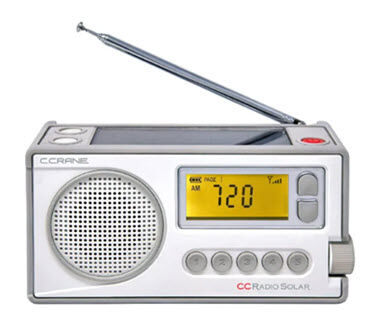NAB Says Car Industry Is Inflating The Cost Of Keeping AM Radio In Dashboards.
- Updated

The National Association of Broadcasters is pushing back against a new report from the Center for Automotive Research that suggests it could cost billions of dollars for automakers to keep AM radio in their cars by the end of the decade. NAB points to the impartial Congressional Budget Office (CBO) estimates released last month that concluded the proposed AM Radio for Every Vehicle Act (S. 1669), which would require automakers to keep AM in their dashboards, would amount to “a fraction” of that estimate.
Based on sales data of electric vehicles, CBO said in a report released last month that the congressional mandate would require manufacturers to update media equipment and infotainment software in about 2.5 to 3 million electric vehicles per year. “Because the unit costs of those updates are small, CBO estimates the total cost of the mandate would be several millions of dollars each year the requirement is in effect,” the report says. It also stated that the total would not exceed the limit for private-sector mandates, currently set at $198 million for 2023.
That is well below the $3.8 billion figure that the Center for Automotive Research claims it would cost to keep AM radio on the road by 2030. “These costs can be avoided by deleting analog AM radio from vehicles and providing consumers with alternative products for in-vehicle audio content,” the report suggests.
The CAR estimates are based on the $70 unit costs of shielding cables, filtering hardware, and changing the physical placement of components. The report says there would also be engineering redesign costs to eliminate the need for “piecemeal late-stage mitigations” to fix the interference problem.
But the report also says those costs are not only to address AM radio reception problems but also to fix interference problems with other systems, including ones related to vehicle safety, durability, thermal conduction, and functional purposes of chassis, body, infotainment, and all the associated power distribution needs in electric vehicles. “They may be useful countermeasures, regardless of the presence of AM radio,” it concedes.
What Listeners Really Want
The car industry is not only trying to convince Congress that the technological fixes are not a sure thing, but it is also working to make the case that listeners don’t really mind having one fewer media option in the car.
John Bozzella, President of the Alliance for Automotive Innovation, says not only do all those new features add weight to a vehicle and reduce battery range, but he says it is a waste of time based on the automakers’ own research. “There’s research to indicate drivers barely listen to analog AM radio while driving. Plus, automakers have finite real estate behind the dashboard to house the newer technologies customers prefer,” he wrote in a blog post this week.
But the NAB says the evidence just does not support those claims, as AM radio listeners have been making their opinions loud and clear in Washington.
“Hundreds of thousands of Americans have voiced their support to their lawmakers for keeping AM radio in the vehicle because they understand the critical role local AM stations play during emergencies – not just when the initial alert goes out but until the danger has passed,” said NAB spokesman Alex Siciliano.
That has helped build support for the AM Radio for Every Vehicle Act that would require automakers to keep AM in their dashboards, concluding it will cost a total of $1 million between 2024 and 2028 for it to be implemented.
If passed, the bill would direct the Department of Transportation to issue a rule requiring that AM broadcast stations be accessible in all passenger motor vehicles manufactured in, imported into, or shipped within the U.S. The Government Accountability Office would also be required to study whether alternative communication systems could fully replicate the reach and effectiveness of AM radio for alerting the public during emergencies.
One potential compromise under consideration in Washington would give smaller automakers more time to comply with the mandate. The Senate version currently has the support of 38 lawmakers, while the House version is backed by 181 members.
There are already several car brands that do not feature AM in their electric models, citing issues with electromagnetic interference to the radio signal. These include BMW, Mazda, Polestar, Rivian, Tesla, Volkswagen, and Volvo. But faced with pressure from Washington and an uproar from the radio industry over plans to remove AM radio from its cars and trucks, Ford Motor Co. reversed course in May and said that it would keep AM radio in its new vehicles starting with the release of the 2024 models.
“We hope automakers follow Ford’s lead in reversing their decision to remove AM radio capability from their vehicles to ensure the 82 million Americans who listen to AM radio have access to this local, free service,” said Siciliano.

No comments:
Post a Comment